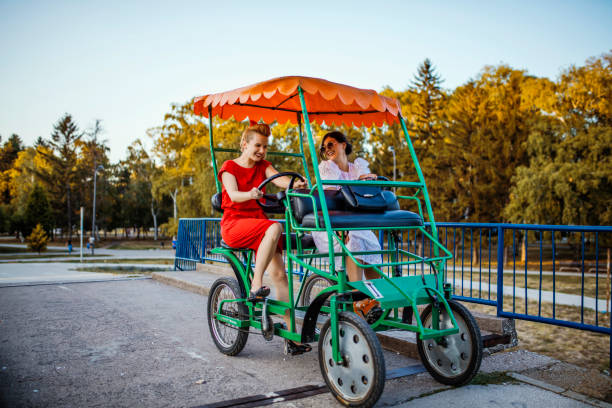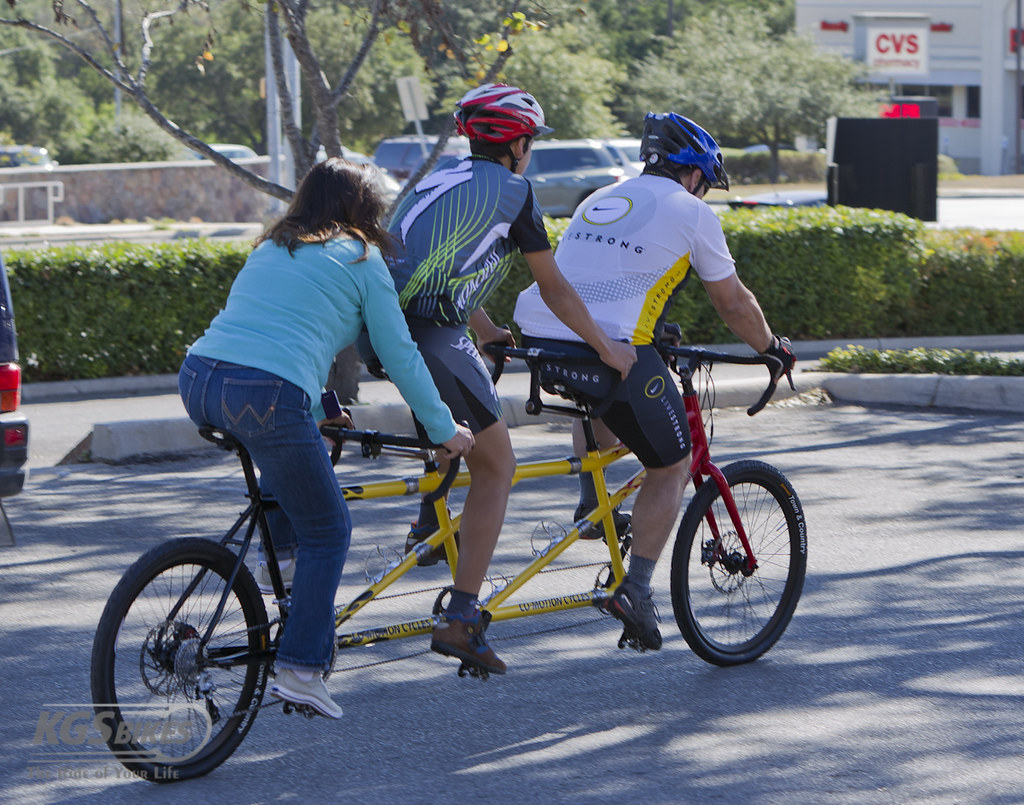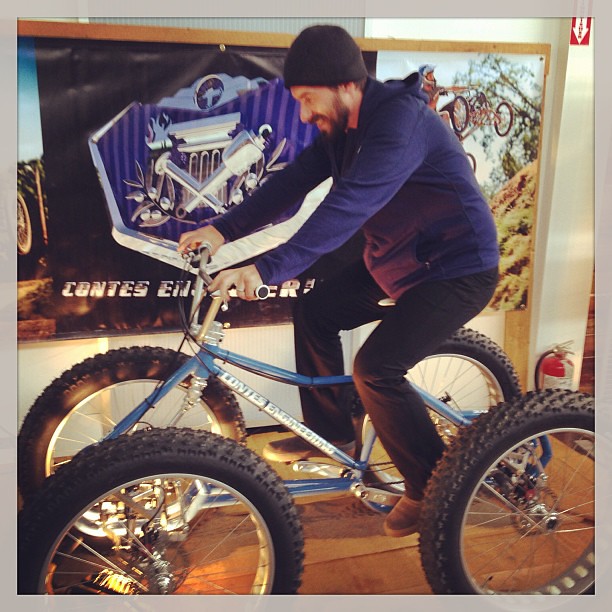The bicycle quad, often referred to as a quadricycle, represents an innovative evolution in the world of cycling, combining the traditional aspects of bicycling with a unique structural design to enhance stability and functionality. Unlike standard bicycles that are built for one or two riders, the bicycle quad is designed to accommodate up to four riders simultaneously, making it a popular choice for family outings, tourist excursions, and even corporate team-building events.
This distinctive form of transportation features four wheels for increased stability, which is particularly beneficial for riders who may find balancing on two wheels challenging. Each seat is equipped with its own set of pedals, allowing all riders to contribute to the vehicle’s motion, though typically, one person steers. This collaborative pedaling not only makes the ride less strenuous but also promotes a cooperative effort among participants, fostering a sense of camaraderie and collective achievement.
Table of Contents
Bicycle quads are often seen in recreational areas, parks, and scenic trails where they blend the joy of outdoor exercise with the practicality of a group-oriented transport mode. They are especially favored in environmentally sensitive areas where motorized vehicles are prohibited but where visitors still cover substantial distances.
All About Bicycle Quads: Features & Benefits
This guide delves into the features and benefits of bicycle quads, exploring their design, use cases, and why they might be the perfect addition to your lifestyle or business.

Chapter 1: Understanding Bicycle Quads
1.1 Definition and History
A bicycle quad is essentially a pedal-powered vehicle with four wheels designed to accommodate one to four riders. The concept of multi-wheeled pedal vehicles dates back to the 19th century but has seen significant evolution in recent decades. Modern quads combine the physical benefits of cycling with enhanced stability and capacity, making them suitable for a broader audience.
1.2 Types of Bicycle Quads
- Family Quads: Designed for two to four riders, these quads often feature adjustable seats and pedals to accommodate adults and children alike.
- Tourist Quads: Commonly used in resorts and scenic areas, these are designed for ease of use and durability, often equipped with canopies and storage options.
- Utility Quads: These models focus on cargo capacity, ideal for deliveries or transporting goods within pedestrian areas.
- Electric-Assist Quads: Equipped with electric motors, these quads help riders cover longer distances or hilly terrains with less effort.
Chapter 2: Design and Technology
2.1 Structural Design
The architecture of a bicycle quad is built around a robust frame, usually made from steel or aluminum, which supports the weight of multiple riders and provides a stable base for additional features like cargo spaces. The four-wheel design ensures stability, making it nearly impossible to tip over under normal conditions.
2.2 Seating and Pedaling Mechanisms
Each seat is typically equipped with independent pedaling systems, allowing riders to pedal at their own pace or take breaks without affecting the vehicle’s motion. Some models also offer adjustable seating to accommodate riders of different sizes.
2.3 Steering and Braking
Steering is usually managed by the front rider via a handlebar or wheel, similar to a traditional bicycle. Braking systems are more robust, often featuring disc brakes or drum brakes to effectively manage the greater weight and speed of quads.
2.4 Advanced Technologies
Recent advancements include the integration of electric-assist motors, which can be activated to help riders during tough stretches. GPS systems for navigation and tracking, LED lighting for safety, and even solar panels for supplemental power are also becoming more common.

Chapter 3: Practical Uses
3.1 Recreational Use
Bicycle quads offer a fun and engaging way to explore parks, waterfronts, and other scenic areas. They are particularly popular among families and groups of friends, providing a sociable and active way to spend time together.
3.2 Commercial Use
In commercial settings, quads are used for guided tours, offering tourists a relaxed way to see the sights. They are also employed in large complexes like airports or factories for efficient transportation across sprawling properties.
3.3 Accessibility and Inclusion
For those who find riding a traditional bicycle challenging due to balance issues or disabilities, quads offer a safer alternative. Their stability and multiple seating options allow almost anyone to enjoy cycling.
Chapter 4: Benefits
4.1 Health Benefits
Cycling, even on a quad, is an excellent form of aerobic exercise, improving cardiovascular health, muscle strength, and flexibility. The ability to pedal independently allows riders to work out according to their fitness levels.
4.2 Environmental Impact
Quads provide a green alternative to motorized transport, especially in congested urban areas or sensitive ecological zones. They emit no pollutants, reduce noise, and help decrease traffic congestion.
4.3 Social Interaction
Riding a quad is inherently a cooperative activity, which can enhance social bonds between family members, friends, or team members. It encourages communication and teamwork, particularly in settings where group coordination is required for steering and pedaling.
Chapter 5: Choosing the Right Quad
5.1 Considerations for Purchase
When choosing a quad, consider the intended use—recreational, commercial, or utility. Assess the number of seats, type of terrain, and whether features like electric assist or enhanced cargo capacity are necessary.
5.2 Maintenance and Storage
Understand the maintenance requirements, including regular checks of brakes, tires, and electrical systems if applicable. Storage can also be a consideration, as quads take up more space than traditional bikes.
5.3 Cost and Availability
While quads can be an investment, their cost must be weighed against their versatility and potential to replace car trips or enhance a business service.
Conclusion
Bicycle quads offer a compelling mix of fun, fitness, and practical utility. Whether you’re looking to enrich your family activities, add a new dimension to your business services, or provide an inclusive option for those unable to ride standard bikes, bicycle quads are worth considering. With their robust design and multiple use cases, they not only represent a step forward in cycling technology but also promote a healthier, more environmentally friendly approach to transportation.










